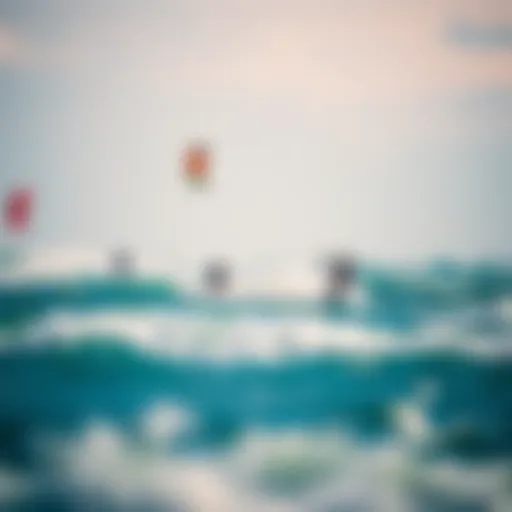Real Kitesurfing: An In-Depth Exploration of the Sport
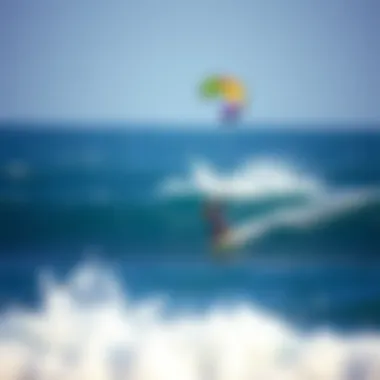
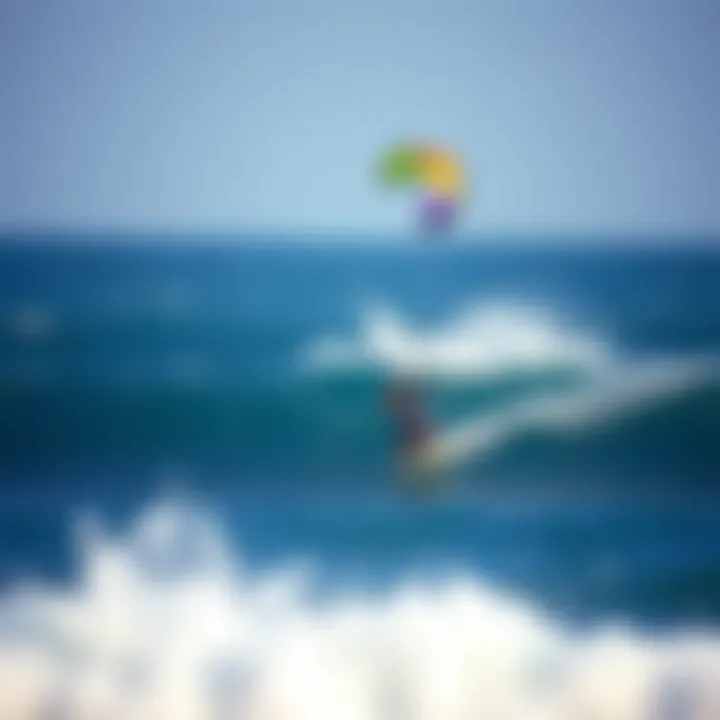
Intro
Kitesurfing stands at the thrilling intersection of surfing and paragliding, creating not just a sport but a full-blown experience. For those who have felt the rush of wind against their face and the pull of the sea beneath their feet, it’s an addictive pursuit. As you dip your toes into the world of kitesurfing, you'll realize that it goes beyond merely riding the waves; it's about mastering the art of control, flow, and freedom. This exploration of kitesurfing will take you through essential techniques, vital gear, and the scenic spots perfect for hitting the water.
Let’s not dawdle. Whether you’re a first-timer eager to catch your first wave or an experienced rider looking to up your game, the insights provided herein aim to deepen your appreciation and skills in this fascinating water sport.
Techniques for Kiteboarding Enthusiasts
Kiteboarding is not just about utilizing your kite and board; it involves a precise blend of techniques, which vary based on your level of experience. Here, we’ll break it down into two key categories: Beginner Techniques and Advanced Maneuvers.
Beginner Techniques
When you're just starting out, the first thing you'll notice is how important it is to get comfortable with the kite.
- Understanding the Wind Window: This is your first stepping stone. Knowing the wind window allows you to predict how the kite will behave in the air. With a little practice, you’ll soon find your rhythm.
- How to Launch and Land: The process of launching and landing the kite is critical. You need to be able to do this smoothly to avoid accidents and ensure safety. It’s not just about strength; coordination and communication with your assistant are key.
- Basic Body Dragging: Learning to move through water while the kite pulls you is where you build that essential feel for board riding. Practice this until you can control your movements without losing balance.
These skills form the backbone of your learning path. Once you feel comfortable executing these basic moves, you'll gradually transition to using a board.
Advanced Maneuvers
If you’re ready to take your kitesurfing to the next level, let's discuss some advanced techniques that can really push your limits.
- Jumping: Timing is everything. You’ll want to master popping off the water by simultaneously pulling up on the kite while your knees bend and straighten. The key here is to find the right gust of wind that gives you lift.
- Waveriding: It’s all about reading the waves and using the kite to ride them effectively. This requires keen observation and an understanding of wave dynamics.
- Unhooked Tricks: This one’s for those who crave audacity. Detaching from the harness and executing maneuvers not only demonstrates skill but also adds flair to your riding. Risky? Perhaps, but oh so rewarding!
More than just raw skill, kitesurfing is about patience, practice, and perseverance.
"The ocean is where a kiteboarding journey begins, but mastering it is an ongoing adventure of continual learning."
As you climb the ranks in your kitesurfing journey and refine these techniques, you’ll uncover a world of excitement and community around you. Stay tuned, for the next section will dive deeper into the most essential equipment that can make or break your kitesurfing experience."
Understanding Kitesurfing
Kitesurfing stands as a unique and exhilarating water sport that represents a blend of surfing, windsurfing, and paragliding. To fully grasp this activity, one must look beyond the surface and understand the dimensions that make it an essential part of the watersport community. A clear comprehension of kitesurfing not only enhances one’s appreciation of the sport but also equips newcomers and seasoned enthusiasts alike with the knowledge they need to navigate its complexities effectively.
Grasping the nuances of kitesurfing opens doors to a world where wind and water create a captivating dance. The importance extends beyond mere definitions and techniques, encompassing the culture, community, and the various elements that drive performance and safety. By understanding the fundamentals, one can make informed decisions about equipment, locations, and personal safety, ensuring a more enjoyable and productive experience on the water.
Definition and Evolution
At its core, kitesurfing combines the thrill of surfing on waves or flat water with the ability to harness wind power through a kite. It originated in the late 20th century as a convergence of ideas and concepts from various wind-driven sports. Initially, the sport took shape with simple inflatable kites and boards that were similar to wakeboards. Over the years, advancements in technology led to improved kite design, materials, and safety mechanisms, turning what was once a niche hobby into a widely recognized water sport.
The evolution of kitesurfing can be traced through its gradual acceptance and recognition at various sporting events and competitions. As the sport matured, so did the range of tricks and techniques that practitioners began to explore, leading to global competitions that attract hundreds of participants.
Kitesurfing vs. Related Sports
While kitesurfing shares similarities with other water sports, it maintains its own identity that sets it apart. Here are a few key comparisons:
- Kitesurfing vs. Windsurfing: Both involve harnessing wind power, but while windsurfing uses a sail attached to a board with a mast, kitesurfing employs a kite. This shifts the center of gravity, enabling kitesurfers to perform a wider array of jumps and tricks.
- Kitesurfing vs. Surfing: Traditional surfing relies solely on ocean waves for propulsion. Kitesurfers can ride both waves and flat water, using wind to generate momentum. This opens up more locations and conditions suitable for kitesurfing compared to regular surfing.
- Kitesurfing vs. Paragliding: Though both sports utilize kites for flight, paragliding is primarily designed for soaring in the air while kitesurfing is rooted in water sports. The skill sets, conditions, and equipment used are distinctly tailored to each sport’s environment.
Understanding these differences not only helps practitioners of the sport appreciate its uniqueness but also clarifies common misconceptions for those new to the scene. By actively engaging in the community and learning the nuances, kitesurfers can experience the depth and richness that this captivating sport offers.
"Kitesurfing isn’t just about riding the waves; it’s a lifestyle, a community, and an adventure waiting to unfold with every gust of wind."
As you delve deeper into this article, you will discover the intricacies of kitesurfing, from gear and techniques to safety measures and global destinations. This foundational understanding will pave the way for a richer experience, whether you are just stepping onto the board for the first time or looking to refine your skills.
Fundamentals of Kitesurfing
Understanding the fundamentals of kitesurfing is akin to laying a solid foundation for a house. Without it, everything crumbles under pressure. The objective here is to illuminate the building blocks of this exhilarating sport, ensuring that both fledgling kitesurfers and seasoned enthusiasts have a strong grasp of what makes the sport tick. Training at this level not only prepares newcomers for the fun-filled thrill of the water but also nurtures their ability to handle any unforeseen challenges that may arise.
Components of the Sport
Kites
The kite is the heart and soul of kitesurfing. Its design is pivotal to how a kitesurfer interacts with the wind and water. Modern kites come in various shapes and sizes, each catering to specific wind conditions and rider preferences. For instance, a leading-edge inflatable (LEI) kite offers stability with good power, making it a popular choice among beginners.
The unique feature of kites is their ability to catch the wind's energy, converting it into dynamic power that propels the rider forward. A kite's size is also crucial; a larger kite catches more wind, providing more lift and speed but also requires greater control skills, especially in gusty conditions. \nTherefore, choosing the right kite is essential for safety and enjoyment in the sport.
Boards
Boards can be viewed as a kitesurfer's ticket to ride the waves. There are various types of boards, from directional boards for wave riding to twin tips that make it easy to ride in either direction. The choice here really boils down to personal preference and the conditions faced.
What's remarkable about boards is their versatility. A board’s design often includes features that improve speed, stability, and ease of use. For example, a board with a concave bottom offers better grip on the water, enhancing maneuverability. However, it's worth mentioning that choosing a board that doesn't suit one's skill level can lead to frustration and difficulty in learning.
Harnesses
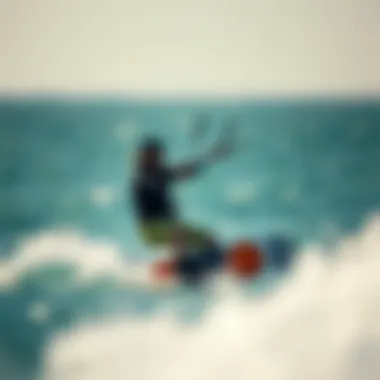
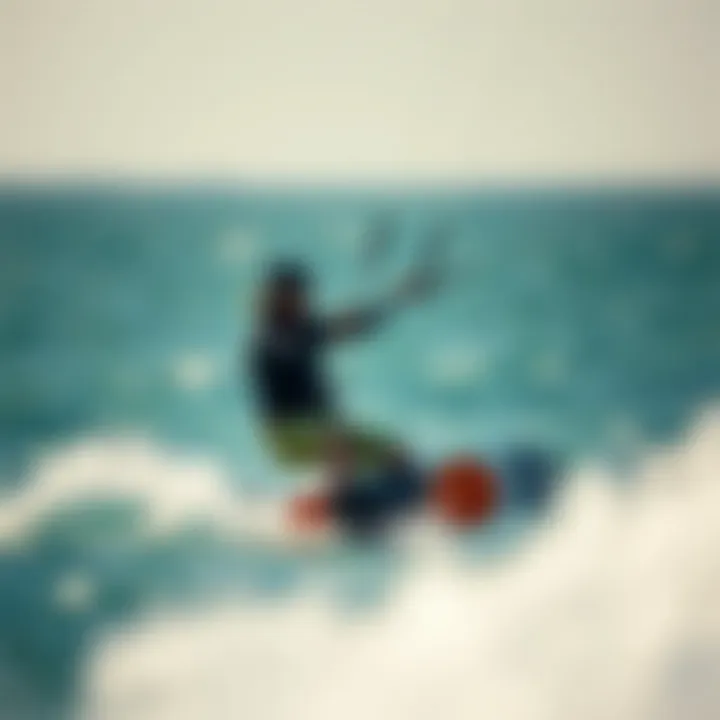
Harnesses play a vital, though sometimes overlooked, role in kitesurfing. Consider them the connection between the rider and the kite. They distribute the kite's pull across the body to allow for prolonged sessions without excessive fatigue. Without a proper harness, a kitesurfer may find themselves wearing out quickly, struggling to maintain control.
There are two main types of harnesses: waist and seat. Waist harnesses are ideal for most riders, providing a higher range of movement, while seat harnesses are beneficial for those who prefer a lower center of gravity or are new to the sport. Each type comes with its own set of advantages; however, comfort is paramount—an ill-fitting harness can ruin an otherwise fantastic day on the water.
Basic Techniques for Newcomers
Launching the Kite
Mastering the art of launching the kite is a rite of passage for new kitesurfers. It's the first crucial step towards becoming proficient in the sport. When launching, one must ensure that the kite is oriented correctly into the wind, which is critical for a smooth ascent into the air. Newcomers must learn to respect the power of the kite; even a slight miscalculation can lead to dangerous or embarrassing situations, such as crashing the kite.
A key characteristic of launching is the communication with a partner, often essential, for keeping everything under control. Proper technique makes a big difference; with practice, launching becomes second nature, allowing riders to focus on enjoying the kitesurfing experience.
Body Dragging
Once the kite is in the air, body dragging serves as an introduction to the forces at play. It’s an essential skill that teaches newcomers how to control the kite while in water. Not only does this technique help in self-rescue situations, but it also builds confidence and a better understanding of how kite power works with water dynamics.
The uniqueness of body dragging lies in its simplicity. It’s primarily about using the power generated by the kite to pull oneself through the water. Riders learn to twist their bodies, changing their positions based on the kite's movement. However, it’s important to remember that while body dragging helps beginners understand kite control, they should be cautious of the water’s depth and the presence of obstacles.
Water Start
As the final step in the basics, the water start marks the transition from a grounded learner to an independent kitesurfer. Unlike launching or body dragging, the water start introduces riders to the combined skills of kite control and board handling. Riders need to coordinate their movements precisely—timing the pull of the kite with the placement of their feet on the board.
This technique is crucial for building fluidity in kitesurfing. The water start might seem daunting at first, but with practice, riders often discover a sense of exhilaration as they glide across the water. This feeling of accomplishment is a significant motivator, encouraging new participants to pursue further progress in kitesurfing.
In summary, the fundamentals of kitesurfing are essential for any aspiring enthusiast, offering a foundation upon which skill and enjoyment can be built. Without grasping these concepts, the journey into kitesurfing can be challenging and may, unfortunately, lead to frustration.
By honing in on the core components and basic techniques, riders pave the way for a successful and enjoyable experience, ensuring they can not only ride the waves but thrive in the community of fellow kiteboarders.
Advanced Kitesurfing Techniques
The world of kitesurfing opens up a realm of possibilities once a rider moves beyond the basics. Advanced techniques enhance both performance and enjoyment, offering a way for riders to express their creativity on the water. Mastery of these skills not only improves efficiency but also elevates your overall experience and safety. Understanding advanced techniques can involve recognizing the importance of wind conditions, kite control, and individual style. Such awareness leads to better decision-making while out on the water.
Tricks and Maneuvers
Jumping Techniques
Jumping is often seen as the hallmark of kitesurfing, embodying the thrill and excitement that attracts many to the sport. Jumping techniques involve using the power of the kite to gain air. Riders initiate the jump by edging hard against the board while simultaneously pulling the bar slightly downwards to engage the kite properly.
The key characteristic of jumping is the controlled take-off, where the combination of speed and kite angle is crucial. This maneuver isn’t just for show; it also allows riders to navigate challenging water conditions and avoid obstacles, making it a beneficial choice for anyone looking to enhance their skillset. One unique feature of jumping techniques is the ability to perform various tricks mid-air, thus allowing for personal style contributions.
However, jumping does come with its challenges. There’s a risk of misjudging the height or landing poorly, which can lead to falls or injuries. Nonetheless, perfecting this technique opens up various avenues for trick progression.
Turning and Transitions
Turning and transitions are vital aspects of kitesurfing that often get overlooked by beginners. Smooth transitions from heel to toe sides and efficient turning techniques can make a huge difference in how fluidly a rider can navigate the water. This skill contributes greatly to the overall flow and style, enabling riders to maintain their momentum without losing speed or control.
One of the main characteristics of effective turning and transitioning lies in the rider’s balance and kite position. A well-timed kite maneuver during a transition can make it feel almost seamless. This is particularly beneficial in challenging chop or waves, where maintaining speed and stability is crucial.
In terms of unique features, the ability to execute sharp turns or graceful transitions can influence a rider’s approach to every section of their ride. However, mastering this technique requires practice and patience, making it a challenge for some riders.
Handle Passes
Handle passes are a signature move that many advanced kitesurfers aspire to perfect. This technique involves passing the control bar from one hand to the other while in mid-air, allowing for smoother landings and the ability to perform tricks more fluidly. The complexity of handle passes adds to their allure, making it a must-try for those looking to elevate their kitesurfing game.
The distinctive feature of a handle pass is its potential to empower the rider’s performance, showcasing not only skill but also confidence. Handle passes are especially popular in competitions and displays, as they demonstrate impressive agility and style. However, they require a strong foundation in jumping techniques; without sufficient experience in the air, handle passes can be tricky to execute effectively, posing risks if not approached cautiously.
Footstraps and Bindings
Footstraps and bindings are essential components of performance gear in kitesurfing. The right fit can influence maneuverability, comfort, and safety when attempting advanced techniques. Footstraps allow for quick adjustments, while bindings tend to offer a more locked-in feel. Choosing between these options can significantly impact a rider’s experience. The right choice boils down to individual preferences and style of riding. Consistent practice with your footstraps or bindings can ultimately enhance performance and ensure a safer ride.
In summary, advancing in kitesurfing techniques can take your skills to new heights. Each element discussed not only enhances technical ability but also adds to the uniqueness of your style on the water.
Choosing the Right Equipment
Choosing the right equipment is crucial in kitesurfing. It impacts not just performance, but also your safety and enjoyment. A novice kiteboarder, for example, might struggle to progress with gear that’s too advanced, while a more experienced rider could feel limited with inappropriate equipment. Thus, understanding the different components, their functions, and how they fit into your specific skill level can set the stage for an enjoyable experience on the water.
Selecting the Right Kite
Types of Kites
When it comes to kites, one size doesn't fit all. The types of kites available, such as inflatable kites and foil kites, each bring their unique strengths and considerations. Inflatable kites are perhaps among the most popular choices, thanks to their ability to maintain shape and stability, even in less-than-ideal wind conditions. On the other hand, foil kites offer a lighter alternative, which many riders favor for their performance in lighter winds.
Each type has its own characteristics that can influence your experience. For instance, inflatable kites tend to be more forgiving for beginners, providing the confidence needed to tackle water starts. However, foil kites can have a more intricate setup, requiring a bit more expertise. Therefore, choosing between them often depends on one’s skill level and the conditions over which they plan to ride.
Size Considerations


The kite's size can be a game changer. A larger kite catches more wind, but it can be harder to manage, especially when the wind picks up. Conversely, smaller kites can be easier to control and allow for agile maneuvering, making them suitable for more experienced riders who enjoy tricks and fast transitions.
When considering size, think about your weight and the wind conditions typical for your chosen sites. For example, someone weighing around 180 pounds might opt for a 9m kite in windy conditions, while the same rider might consider a 12m kite for lighter days. Balancing size with wind conditions can maximize performance, ensuring you’re safely enjoying every ride.
Buying a Board
Board Types
The type of board you select plays a significant role in how well you connect with the water. There are directional boards, which are more suited for wave riding, and twin-tip boards, which are great for beginners and versatile for all kinds of riding. A directional board, shaped like a surfboard, offers performance benefits in the waves, allowing for excellent carving and speed. Alternatively, twin-tip boards are symmetrical, allowing for easy transition, making them popular among newcomers.
Each board type’s unique design caters to different styles and preferences. If you’re into tricks and jumping, you might lean towards a twin-tip because of its forgiving nature. However, for those inclined toward riding the waves, directional boards will likely be the go-to.
Recommended Brands
When it comes to selecting the right brands, choices like Naish, Cabrinha, and Slingshot consistently get mentioned in performance and reliability.A good brand can influence not just your riding experience but also potential resale value down the line. These brands are known for crafting quality equipment that meets the demands of both newbies and veterans alike.
Focusing on reputation is vital when buying gear. Brands that have built their name through years of solid engineering and customer feedback tend to offer better service and warranties. In the long run, investing in reputable brands can save you both time and money, ensuring your gear lasts longer and performs better.
Safety in Kitesurfing
Kitesurfing is undoubtedly an enthralling sport filled with adrenaline and the thrill of flying above the water, but like any high-energy activity, it comes with its own set of risks. Emphasizing safety is not just an afterthought; it is the backbone of a rewarding kitesurfing experience. Understanding, recognizing, and mitigating risks greatly enhances enjoyment for both novices and seasoned riders.
Kitesurfers must be aware of dangers related to kite operation, environmental factors, and physical capabilities. By prioritizing safety, one does not only protect themselves but also sets a standard and example within the kitesurfing community. Here’s a closer look at what comprises safety in kitesurfing and its importance.
Common Risks and Precautions
Kitesurfing offers the exhilarating rush of wind and water, yet with that comes various hazards. Common risks include:
- Equipment Failure: A technical snag can occur at any moment, such as a snapped line or malfunctioning kite.
- Environmental Factors: Strong winds, changing tides, and local wildlife can present unforeseen dangers.
- Injury Risk: Collisions with other kiters, surfboards, or even personal injury during tricks pose real threats.
To safeguard against these hazards, kitesurfers should adopt specific precautions:
- Perform Regular Gear Checks: Before hitting the water, inspect gear for signs of wear and tear. Look for frayed lines or damaged kites. A stitch in time saves nine.
- Know Your Limits: Whether it’s wind intensity or your own physical limits, refrain from pushing boundaries. Progress should be gradual.
- Stay Aware of Other Water Users: Keep an eye on swimmers, other kitesurfers, and boats. Maintaining situational awareness can avert collisions.
- Attend Safety Briefings: Most kitesurfing schools and communities provide essential safety orientations which empower new users with critical skills.
Safety first may seem cliché, but it remains the golden rule in kitesurfing.
Understanding Weather Conditions
Weather conditions play a pivotal role in kitesurfing, influencing not just the experience but the safety of every session. Wind speed, direction, and shifting weather patterns can create dramatically different scenarios.
When it comes to wind:
- Ideal Wind Speed: Generally, a wind speed of 12 to 25 knots is perfect for most kitesurfers. Too much wind can cause loss of control, while too little makes it challenging to have fun.
- Wind Direction: Kitesurfers should be wary of off-shore winds, which can sweep them away from safety towards open water. Knowing the safest way to launch and land is critical.
Moreover, meteorological factors such as storms or sudden gusts should never be ignored. Check reliable weather sources prior to a session. Websites like Weather.com and Windy provide valuable forecasts and wind maps to help plan outings.
By blending a keen approach to risk awareness and environmental understanding, every kitesurfer can enhance safety, enjoy kitesurfing at its best, and contribute positively to the vibrant kitesurfing culture. Keeping safety at the forefront allows for richer, more exhilarating experiences in this amazing sport.
Navigating Global Kitesurfing Locations
Exploring the different kitesurfing locations around the globe is essential for anyone interested in this exhilarating sport. Each spot offers its own unique characteristics, climate conditions, and community vibes, impacting not only the experience but also the skill development of practitioners. Choosing the right location can elevate one’s kitesurfing skills, provide an enjoyable experience, and connect individuals with like-minded enthusiasts. Let’s dive into some of the most popular destinations and what they bring to the table.
Top Kitesurfing Destinations Worldwide
Flat Water Spots
Flat water spots are often a go-to for many kitesurfers, especially those still finding their footing in the sport or looking to refine their techniques. The significance of these locations lies in their smooth surfaces, which allow for easier movement and less unpredictable conditions. This makes it much less intimidating for beginners or for those attempting tricks.
A prominent example is Cabarete in the Dominican Republic. This location is renowned for its consistent winds and warm waters—two key features that attract kitesurfers year-round. The flatness of conditions allows beginners to learn without worrying about the additional challenges posed by waves.
"Flat water spots are like the training wheels for those serious about getting into kitesurfing. It’s where a lot of skills blossom."
Moreover, it’s common to find lagoon-style environments at these locations, offering side-on shore winds. These not only help keep surfers safe but also enable smooth entry and exit from the water. One downside could be crowded conditions. Sometimes, it can feel a little packed during peak seasons. Nonetheless, the benefits of flat water spots make them a staple in the kitesurfing community.
Wave Riding Locations
In contrast, wave riding locations present a different allure altogether. These sites, equipped with rolling waves, cater mainly to experienced kitesurfers looking for more challenging conditions. Locations like Maui, Hawaii, are celebrated for having some of the best wave riding, where the interplay between the wind and ocean generates breathtaking waves suited for high-level maneuvers.
What makes Maui particularly captivating is the combination of scenic beauty and thrilling performance opportunities. Surfers can experience the sheer power of nature while indulging in adrenaline-packed sessions. The community here is vibrant, often showcasing seasonal competitions that pull in both participants and spectators alike.
However, riding waves comes with its own set of challenges. Wind patterns might be more unpredictable, creating a dangerous scenario for those without enough experience. It’s not unusual for less skilled riders to get caught in difficult conditions, making it crucial to know one’s limits before venturing out in waves.
Local Regulations and Licenses
When traveling to kitesurfing locations, being aware of local regulations and potential licensing requirements is equally vital. Each country or region may enforce specific guidelines to ensure safety and to protect the environment. For instance, Spain might require permits in certain areas to manage the surf traffic, while other destinations could have restricted zones designated for wildlife preservation.
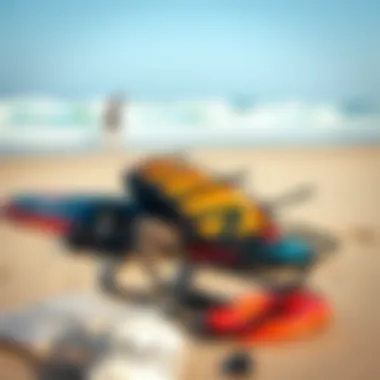
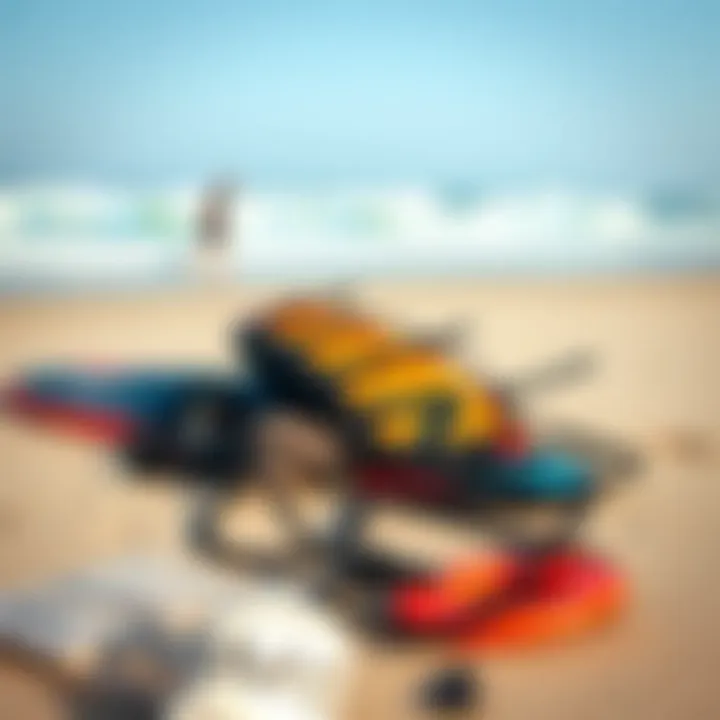
Before heading out to kitesurf, it’s advised to check local laws and make sure you’re compliant. This not only aids in fostering a positive relationship between kitesurfers and local communities, but also ensures your own safety.
By paying attention to these elements while navigating global kitesurfing locations, individuals can make informed decisions that enhance their experience and contribute positively to the kitesurfing community as a whole.
For more in-depth discussions on local regulations, exploring the following links can be helpful:
Being part of this global community of kitesurfing not only enriches the sport but often leads to lifelong friendships and unforgettable adventures.
The Community and Culture of Kitesurfing
Kitesurfing is not just about the thrill of the wind and waves; it's also about the vibrant community that connects enthusiasts from all corners of the globe. This sense of camaraderie is woven into the very fabric of kitesurfing culture. With a shared passion for the sport, kitesurfers find a collective identity that transcends borders and fosters friendships. Engaging with this community enhances the overall experience of kitesurfing, as it offers a unique support network.
Kitesurfing Events and Competitions
Kitesurfing events and competitions play a pivotal role in uniting athletes and enthusiasts. These gatherings create hubs of activity, showcasing talent, innovation, and a shared love for the ocean. Events range from local contests to international championships, drawing crowds that bring life to coastal hotspots. Participating in competitions can be intimidating, especially for newcomers, but they are also an opportunity to meet seasoned kitesurfers, learn tips, and witness unparalleled skill first-hand.
The various contests often have different formats:
- Freestyle: Emphasizes tricks and aerial maneuvers.
- Race: Focuses on speed and strategy, often held on long courses.
- Wave Riding: Combines surfing skills with kitesurfing, showcasing how to navigate and ride in waves.
Many events not only celebrate competition but also highlight community involvement. Competitors, spectators, and vendors alike gather to exchange knowledge on gear and techniques, making it a rich learning environment.
"Kitesurfing is not just a sport, it’s a lifestyle shared by passionate individuals dedicated to enhancing their skills and experiences."
Joining a Kitesurfing Community
Becoming part of a kitesurfing community can be like diving into a bustling ocean of insights and support. Many find that engaging with others can help accelerate their learning curve. From local clubs to online forums, the options for connecting are abundant.
- Local Clubs: These serve as great starting points. Joining a club means immediate access to lessons, organized outings, and social gatherings. Clubs often foster a welcoming environment for beginners, making learning feel less daunting.
- Online Forums: Websites such as Reddit or dedicated kitesurfing forums allow kitesurfers from varying backgrounds to share experiences, ask questions, and offer advice. Whether it’s a gear recommendation or tips for tackling tricky conditions, online communities thrive on shared knowledge.
Moreover, social media platforms like Facebook let kitesurfers stay updated on events, share stories, and foster friendships. By participating, individuals not only enhance their own experiences but also contribute to a greater collective understanding of the sport.
Being part of this community also opens doors to potential mentorship. Many seasoned kitesurfers are willing to share their experiences, helping newcomers navigate their own kitesurfing journeys. With encouragement and knowledge from others, the kitesurfing experience becomes richer and more fulfilling.
Maintenance and Care for Equipment
Taking care of kitesurfing equipment is not just about keeping your gear looking sharp; it’s about ensuring your safety and optimizing your performance on the water. Proper maintenance extends the life of your gear and helps avoid surprises when you’re out riding the waves. Whether it's your kite, board, or harness, a bit of attention goes a long way. Ignoring maintenance can lead to costly repairs or replacements.
Regular Maintenance Tips
When it comes to keeping your kitesurfing equipment in top shape, regular maintenance is crucial. Here are some simple yet effective tips to keep your gear functioning well:
- Inspect Before You Ride: Always check your kite, lines, and board for any signs of wear or damage before you head out. Small frays or tears can lead to serious issues if not caught early.
- Wash with Fresh Water: After every session, rinse your equipment with fresh water to remove salt and sand. Salt can corrode materials and sand can cause scratches on your equipment.
- Dry Properly: Never pack your gear away while it’s still wet. Always dry your kite and harness completely before storing them to prevent mold and degradation.
- Check Line Tensions: Regularly inspect your lines for knots, tangles, or wear. Ensure they have the right tension, as loose or overly tight lines can affect performance.
- Store with Care: When not in use, store your kite and board in a cool, dry place, ideally in a protective bag. Avoid leaving them in direct sunlight for extended periods, as UV can weaken materials.
By following these steps, you can enjoy smoother sessions and a longer lifespan for your gear.
"When your gear’s in good shape, your mind is at ease. The less you worry about the equipment, the more you can enjoy the ride."
Storing Your Gear Properly
How you store your kitesurfing gear is just as important as how you maintain it. Consider these essential guidelines for proper storage:
- Use Gear Bags: Invest in padded gear bags for your kite and board. They provide protection against physical impacts and are easier to handle during transport.
- Avoid Heat: Store your kite and other gear in a shaded and temperate environment. Excessive heat can warp your board and degrade the kite fabric.
- Au-Ground Storage: When storing your board, consider laying it flat on a soft surface instead of leaning it against walls. This prevents unnecessary pressure points.
- Remove Straps and Accessories: If your harness has straps or extra parts, remove them before storage. They can buckle and create awkward shapes which are tough to iron out later.
Remember, proper storage prevents damage before it starts! Taking these steps not only keeps your gear safe but also makes your next session smoother. Proper care allows you to focus on what really matters—riding the waves.
The Future of Kitesurfing
The future of kitesurfing is not just an afterthought; it’s a canvas painted with innovative ideas and evolving practices. The sport is continuously transforming, driven by the pursuit of performance and enthusiasts' desire for adventure. With advancements in technology and shifting trends, the horizon looks quite bright.
Innovations in Technology and Gear
When discussing the future, advancements in gear cannot be overlooked. Kitesurfing gear has seen significant improvements that cater to both performance and safety. Cutting-edge materials have made kites lighter yet stronger, allowing for more responsive handling and better performance in various wind conditions.
- Kite Materials: New fabrics, like the ripstop nylon and Dyneema, steal the limelight, reducing wear and improving durability.
- Control Systems: Enhanced control bars provide smoother adjustments, aiding maneuverability and giving riders greater control over their kites. Manufacturers are continually working on intuitive designs to make flying kites more user-friendly.
- Smart Technology: Strap yourself in, because innovations like GPS tracking and performance monitoring integrated into kites are emerging. With these, riders can analyze their sessions, understand their style, and improve accordingly.
Here, it's also essential to consider sustainability. Brands are now focusing on eco-friendly materials and ethical manufacturing practices. It’s becoming more common to see companies using recycled plastics or bio-based materials, allowing enthusiasts to ride waves while respecting the environment.
"The future of kitesurfing is not just about sport; it's about sustainability and respecting our playground: the earth and waters we love."
The Evolution of Kitesurfing Techniques
As much as gear matters, the techniques of kitesurfing are what truly define the sport. Over the years, we've witnessed an evolution influenced by both technology and creativity of riders.
Take the jump. Initially, tricks were simple hops. Now, we have a plethora of styles ranging from high spins to flips and rotations performed with incredible precision. This evolution reflects the sport's dynamic nature - the willingness of riders to push beyond previous limits.
Further, the spirit of community plays a crucial role here. The sharing of skills and ideas among kitesurfers fosters innovation. Platforms, like dedicated forums on reddit.com or instructional videos on facebook.com, allow enthusiasts to connect, share tips, and debut new tricks to eager audiences, nurturing a culture of continuous learning.
New techniques often emerge from informal settings: beach gatherings, competitions, and workshops. These environments stimulate creativity. Kitesurfers, whether experienced or newcomers, can engage with one another to improve skills and experiment. The line between traditional kitesurfing and other water sports, like windsurfing or surfing, continues to blur as techniques evolve and adapt, leading to a richer kitesurfing experience.













